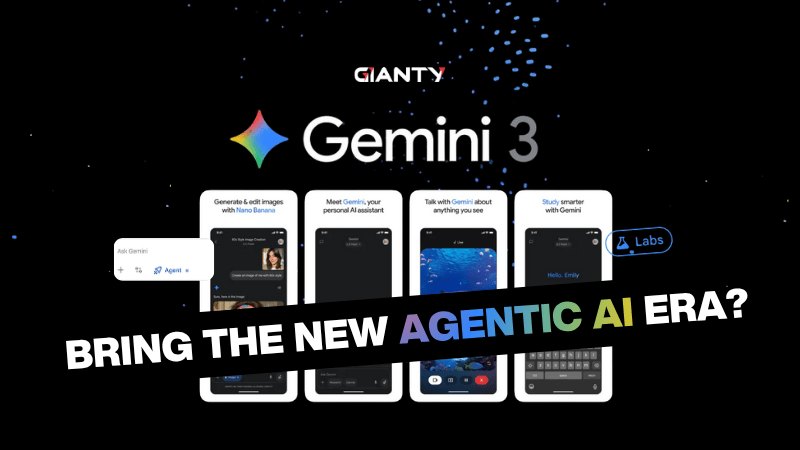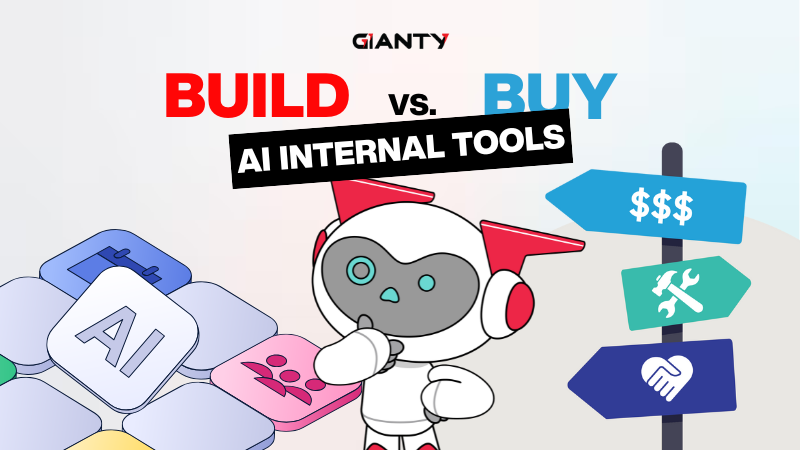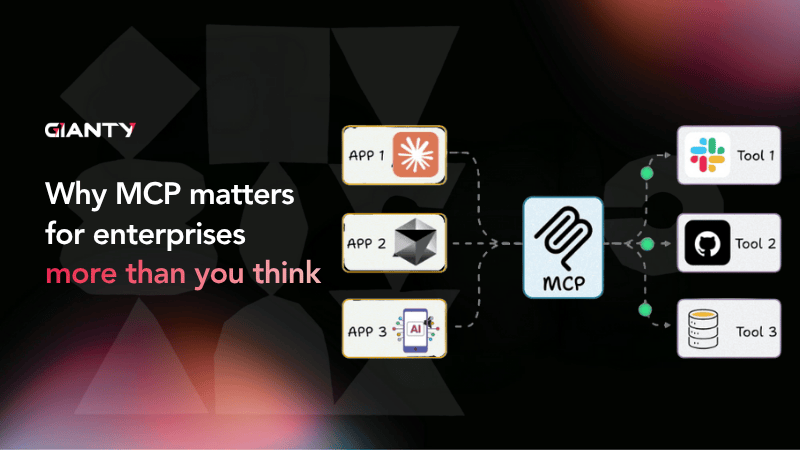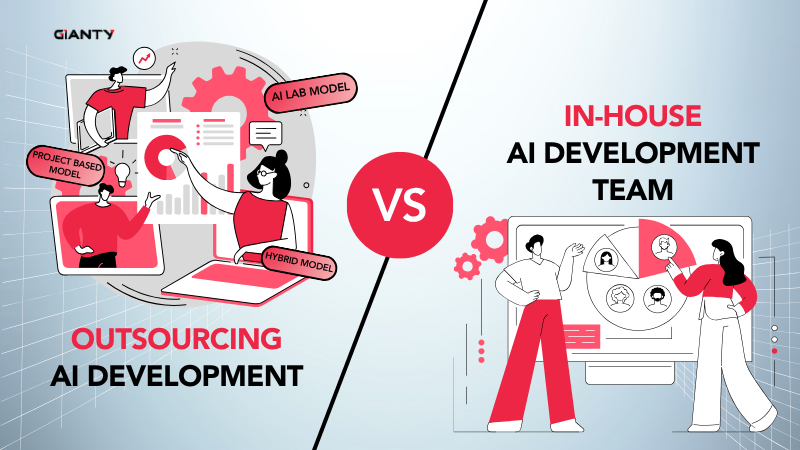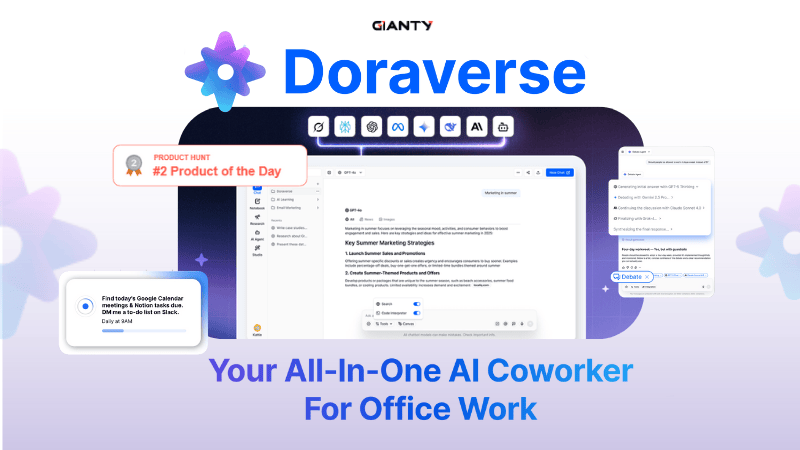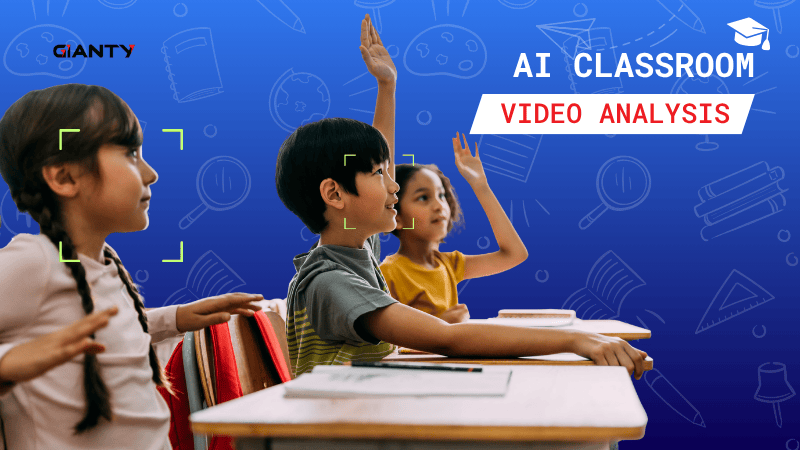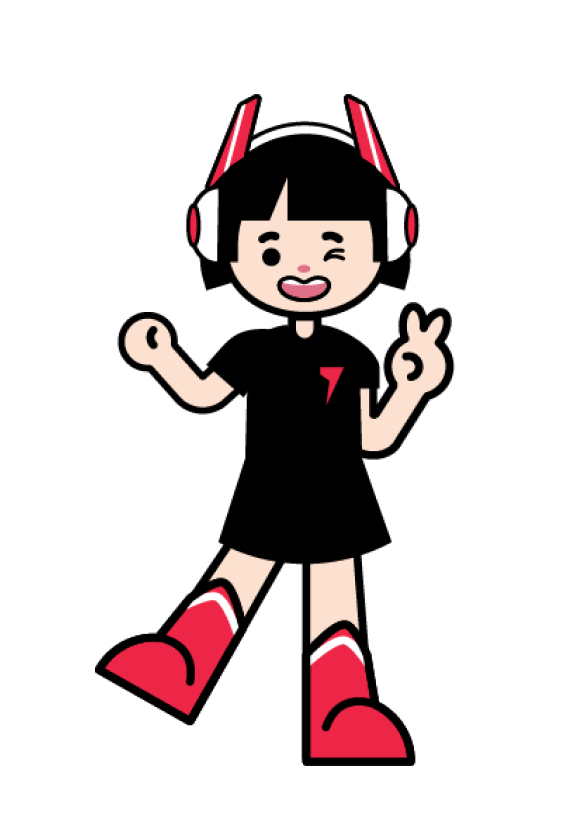In the whirlwind of digital transformation, two buzzwords often rise to the top: AI vs. Automation. They’re everywhere – from C-suite boardrooms to your latest software pitch deck. Many organizations explore AI for business innovation alongside automation to streamline operations. However, while AI vs. Automation are related in their goals, they aren’t the same thing.
But here’s the real twist: while they’re different, they work even better together. So let’s break them down, explore how they overlap, and most importantly – how you can use both to level up your business with GIANTY.
What Is AI and Automation? Simple Definitions for Business Use
Before diving deeper, let’s clearly define what we mean by AI vs. Automation, as the two concepts have distinct characteristics and roles.

What is Artificial Intelligence (AI)?
AI is what happens when machines start acting like they are “learning and thinking”. More technically: AI refers to systems that can learn from data, recognize patterns, and make decisions – without being explicitly programmed for every single scenario. Instead of just following a script, AI adapts.
A 2023 McKinsey survey found that 60% of organizations have already embedded at least one AI capability into their workflows.
Key Traits:
- Learn from data: The more data it sees, the better it gets.
- Recognizes patterns: It can detect trends or anomalies a human might miss.
- Makes decisions: It doesn’t just follow instructions – it figures things out.
Example: A chatbot that understands customer questions and tailors its responses, even if the phrasing is new or unexpected.
What is Automation?
Automation, on the other hand, is the “doing” part of technology. It’s all about using technology to carry out tasks without needing a human to step in every time. But unlike AI, automation doesn’t learn or adapt.
Key Traits:
- Executes repetitive tasks: Anything you do over and over again, just automate it.
- Follows rules: It does exactly what it’s told, every time.
- Fast and consistent: No breaks, no errors – assuming the rules are right.
Example: Automatically sending a confirmation email when someone fills out a form.
It just follows instructions – reliably and at scale. Think of automation as your ultra-efficient “doer.” It’s perfect for anything that’s repetitive, rule-based, or just plain boring.
What’s the Actual Difference Between AI vs. Automation?
Let’s examine AI vs. Automation side by side to highlight their differences and complementary strengths.
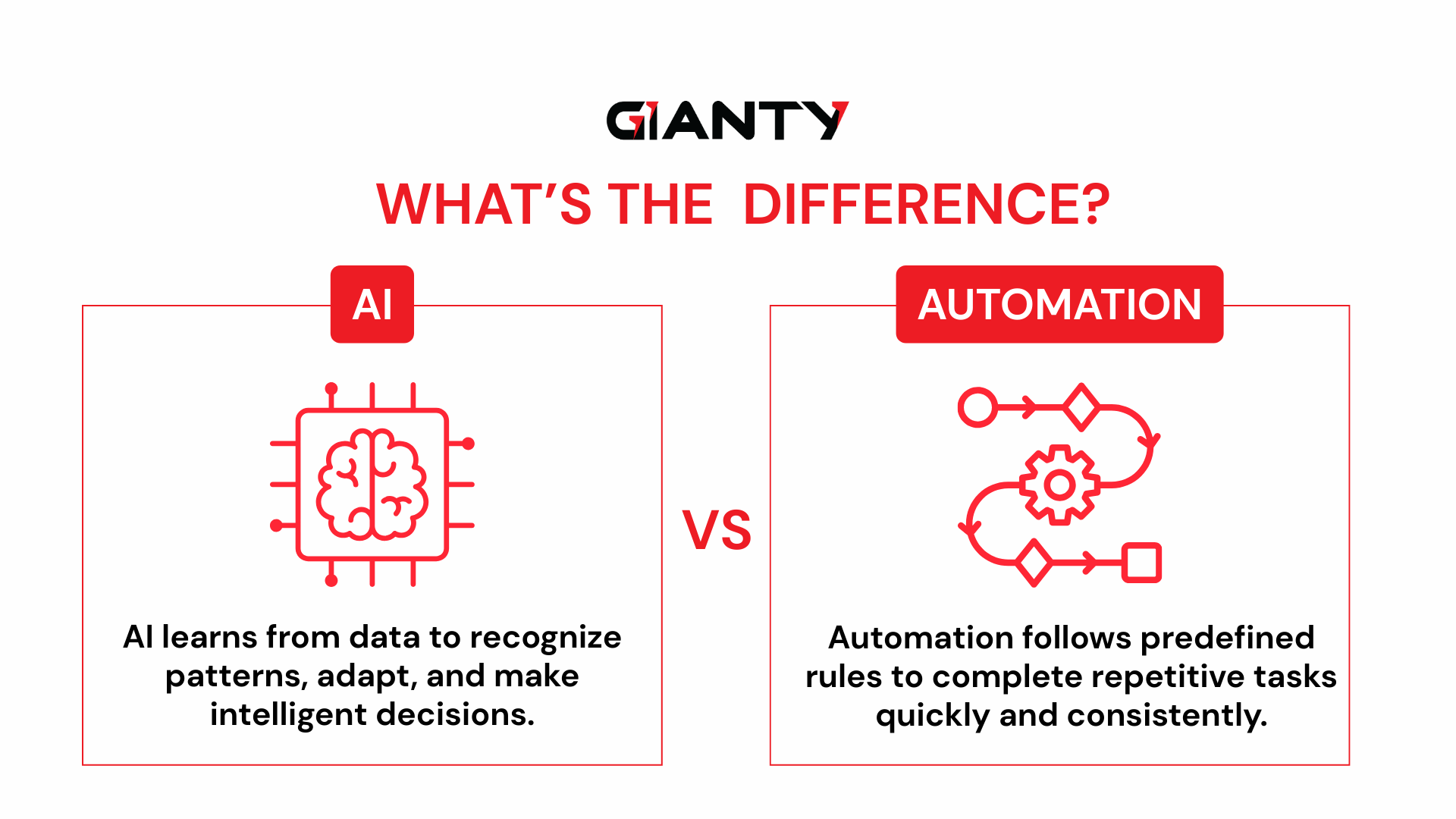
A quick analogy: If automation is a conveyor belt in a factory (reliable, predictable, rule-driven), AI is the quality control inspector with a sharp eye and growing experience.
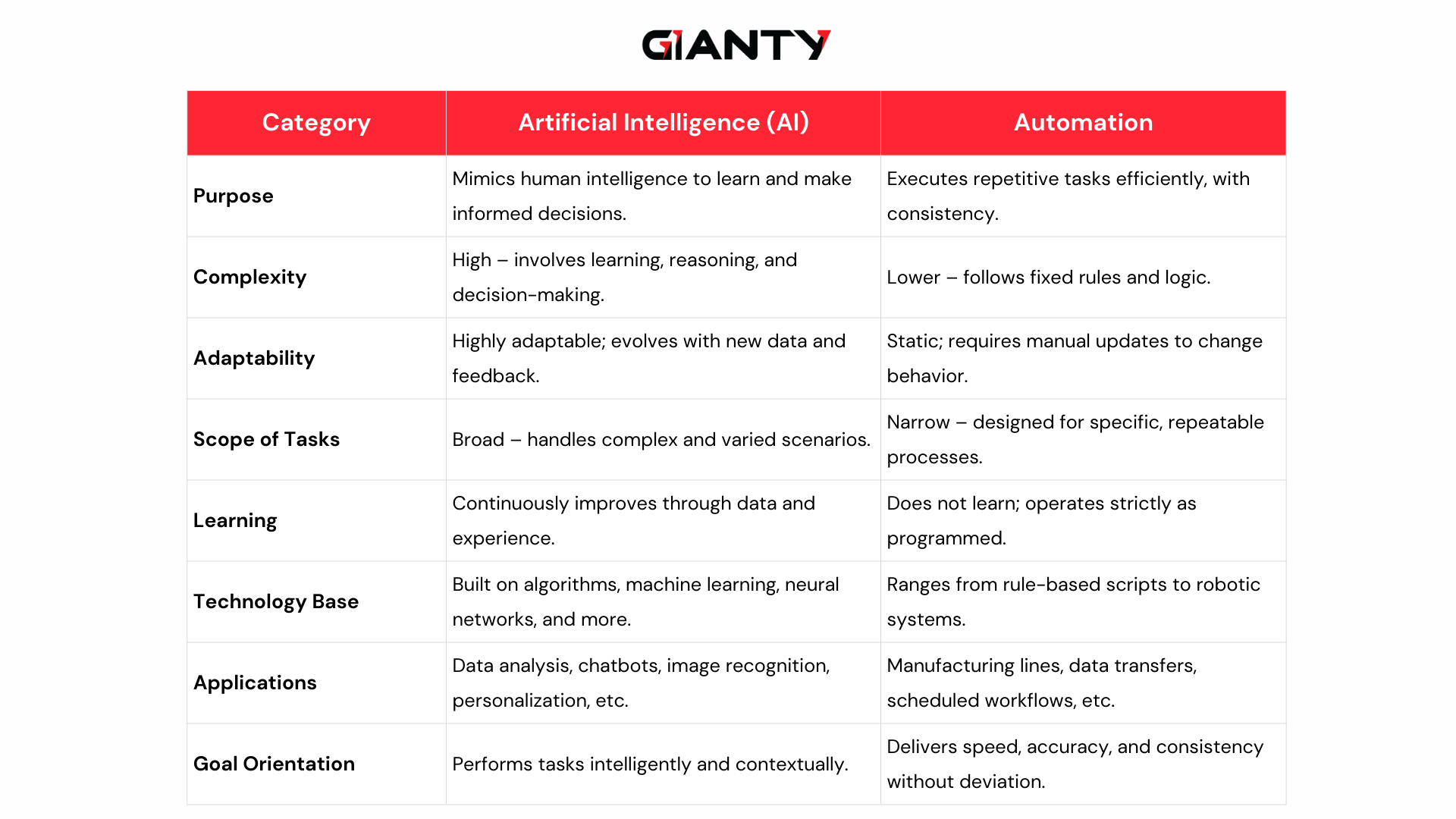
Strategic Application in Business: Real-world use cases
When to Use Automation
Automation excels in repetitive, high-volume, rule-based tasks. If a process happens the same way every time, it’s likely a strong candidate for automation.
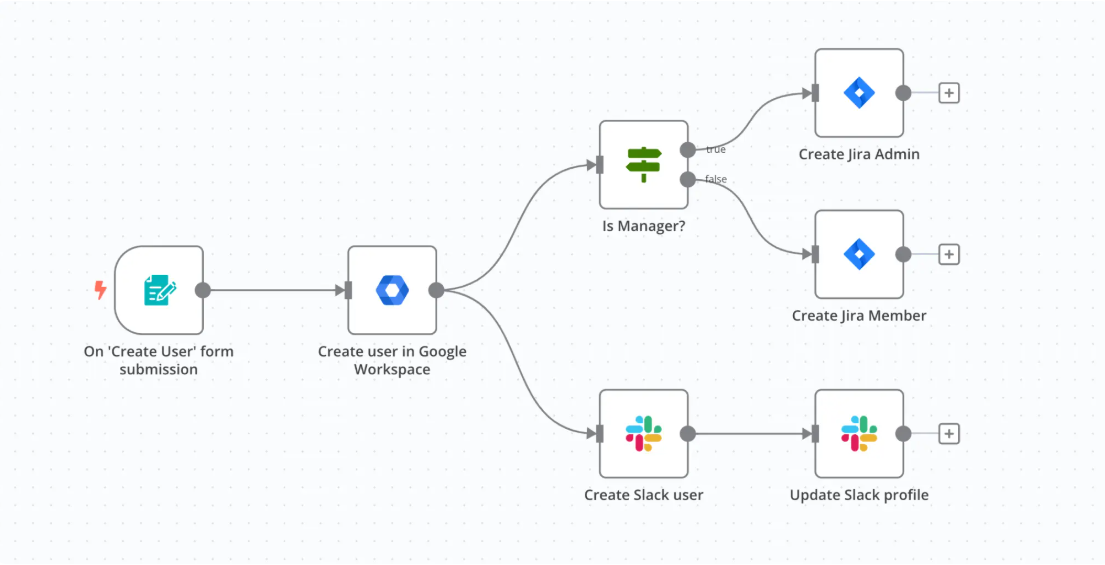
Ideal scenarios:
- Data handling: Automatically transfer data between systems (e.g., form to CRM).
- Scheduled workflows: Routine tasks like weekly reports, backups, or billing cycles.
- Process consistency: Tasks requiring precision and zero variation, such as sorting emails or running scripts.
When to Use AI
AI is best suited for tasks involving variability, complexity, or decision-making based on data. It’s designed to learn and adapt, making it ideal for dynamic environments.
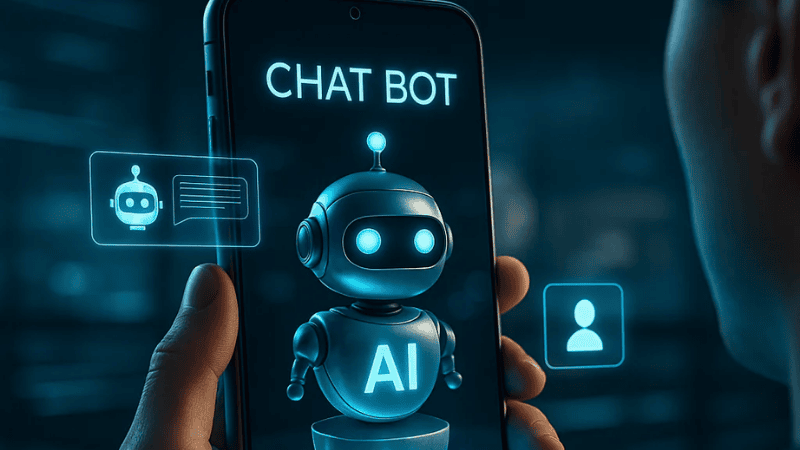
Ideal scenarios:
- Conversational interfaces: Chatbots that understand and respond to natural language.
- Forecasting and predictions: From sales trends to risk detection.
- Recognition tasks: Reading scanned documents, identifying anomalies, or analyzing images.
- Personalization: Tailoring content or recommendations based on user behavior.
Synergy Between AI and Automation – AI Automation
While AI and automation serve different purposes, their combined use – often called intelligent automation (AI Automation) unlocks far greater value than either can provide alone.
Think of automation as the executor and AI as the advisor. Automation handles repetitive execution at scale, while AI brings intelligence to interpret data, make decisions, or adapt based on context. Together, they create workflows that are both fast and smart.
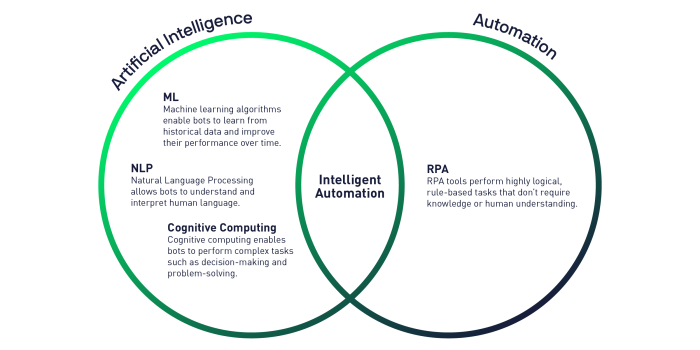
The global intelligent automation market is projected to reach $25.9 billion by 2027, driven by enterprise demand for scalable, AI-enhanced workflow solutions.
What “AI vs. Automation” looks like in practice
- Customer service: AI reads and interprets incoming emails or chats, while automation routes tickets or sends personalized replies.
- Document processing: AI extracts relevant data from forms or images; automation enters it into the appropriate systems and triggers next steps.
- IT operations: AI detects anomalies in system logs; automation initiates alerts, responses, or remediation steps.
- Internal Communication: AI translates the content of messages or announcements, while automation ensures the translated version is delivered to the correct channel or user
By combining AI’s ability to learn and decide with automation’s ability to execute instantly and reliably, organizations can:
- Handle more complex workflows with fewer manual interventions
- Improve decision accuracy and process flexibility
- Scale operations without sacrificing quality or speed
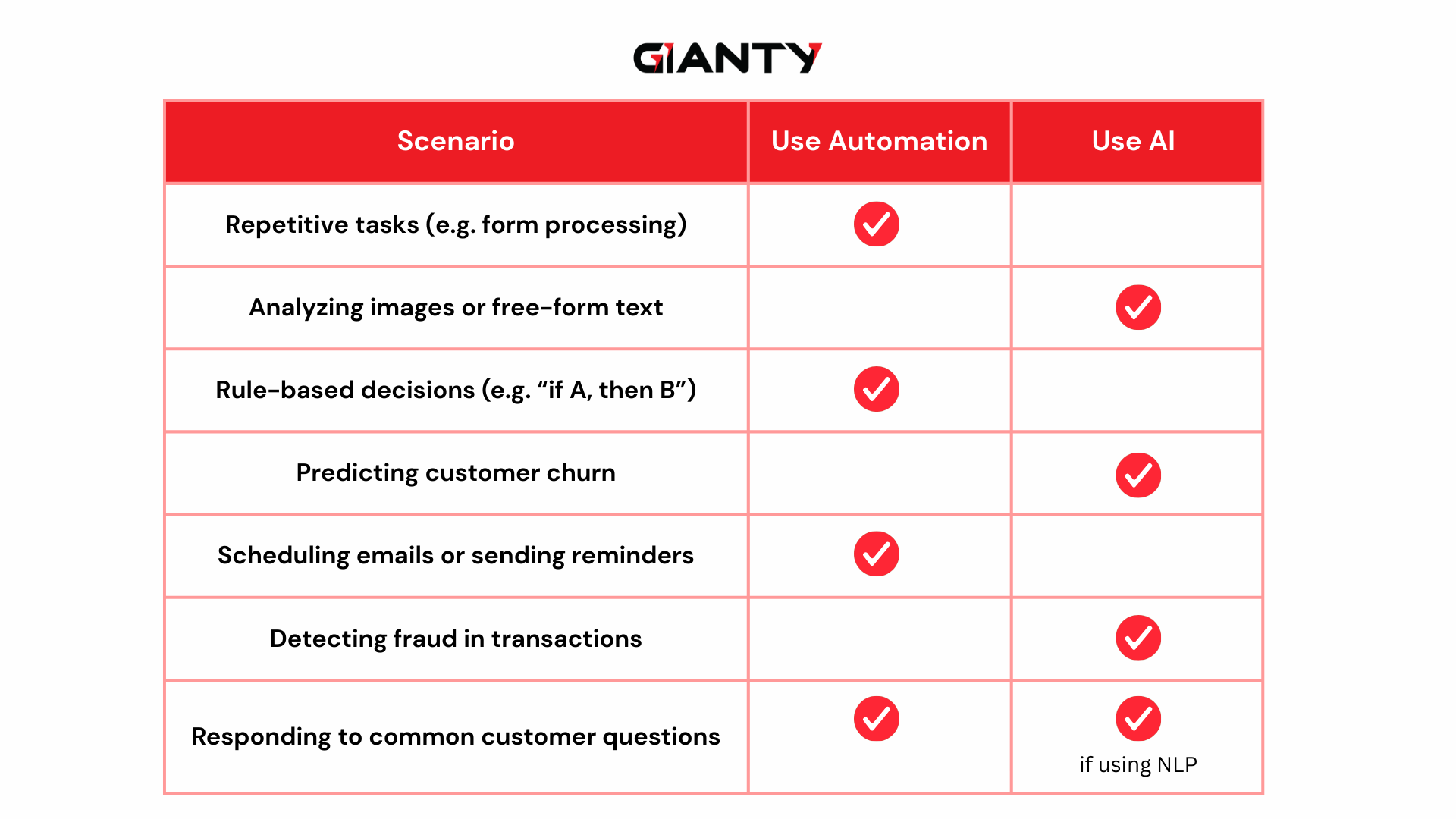
According to Gartner, most of organizations will implement structured automation initiatives powered by AI capabilities by 2025, highlighting a growing shift toward intelligent automation as a core business strategy.
How to Actually Use Both – Strategically in your Business
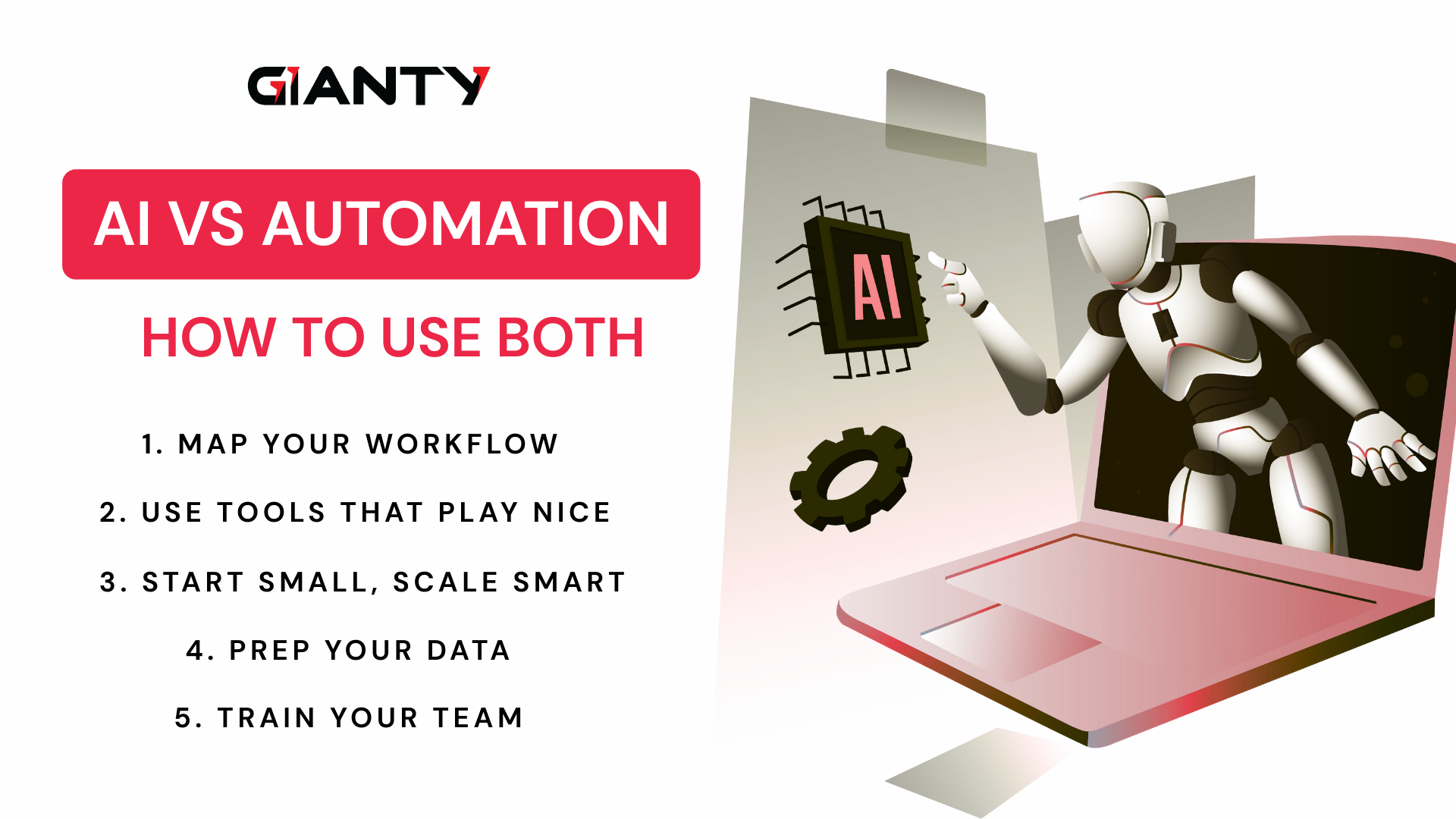
Map Your Workflow
Look at your existing processes. Break them down: What parts are repetitive? Automate these. What parts involve judgment, prediction, or interpretation? Augment with AI.
Example: In an HR onboarding flow, use automation to send paperwork and set up accounts. Use AI to analyze resume data and match the new hire with a mentor or training path.
Use Tools That Play Nice
You don’t need to build everything from scratch. Tools like n8n, Zapier, UiPath, and Microsoft Power Automate increasingly integrate with AI APIs like OpenAI, Google Cloud…
These allow you to drop AI steps directly into automated workflows. For instance: Use AI-generated content (like summaries or tags) in publishing workflows.
Start Small, Scale Smart
Pick one use case with clear ROI and build from there. The idea is to layer intelligence into your workflows gradually. For example:
- Start with auto-tagging support emails using AI.
- Then automate routing those emails based on tags.
- Eventually, use AI to suggest responses – or respond automatically to low-risk queries.
Prep Your Data
AI only performs as well as the data it learns from. Before rolling it out, clean your data and ensure it’s flowing into the right systems. If AI is the brain, then data is its food. Feed it well.
Train Your Team
AI and automation aren’t just technical tools – they change how people work. That’s why team readiness is just as important as the tech itself. As these tools shift workflows and responsibilities, it’s essential to provide your team with training, support, and clarity. Many employees may feel unsure about how AI or automation will affect their role.
And if you need help guiding this transformation, GIANTY can provide applied AI engineers who not only build technical solutions but also consult with your team to align AI initiatives with your business objectives.
Common Challenges in AI and Automation
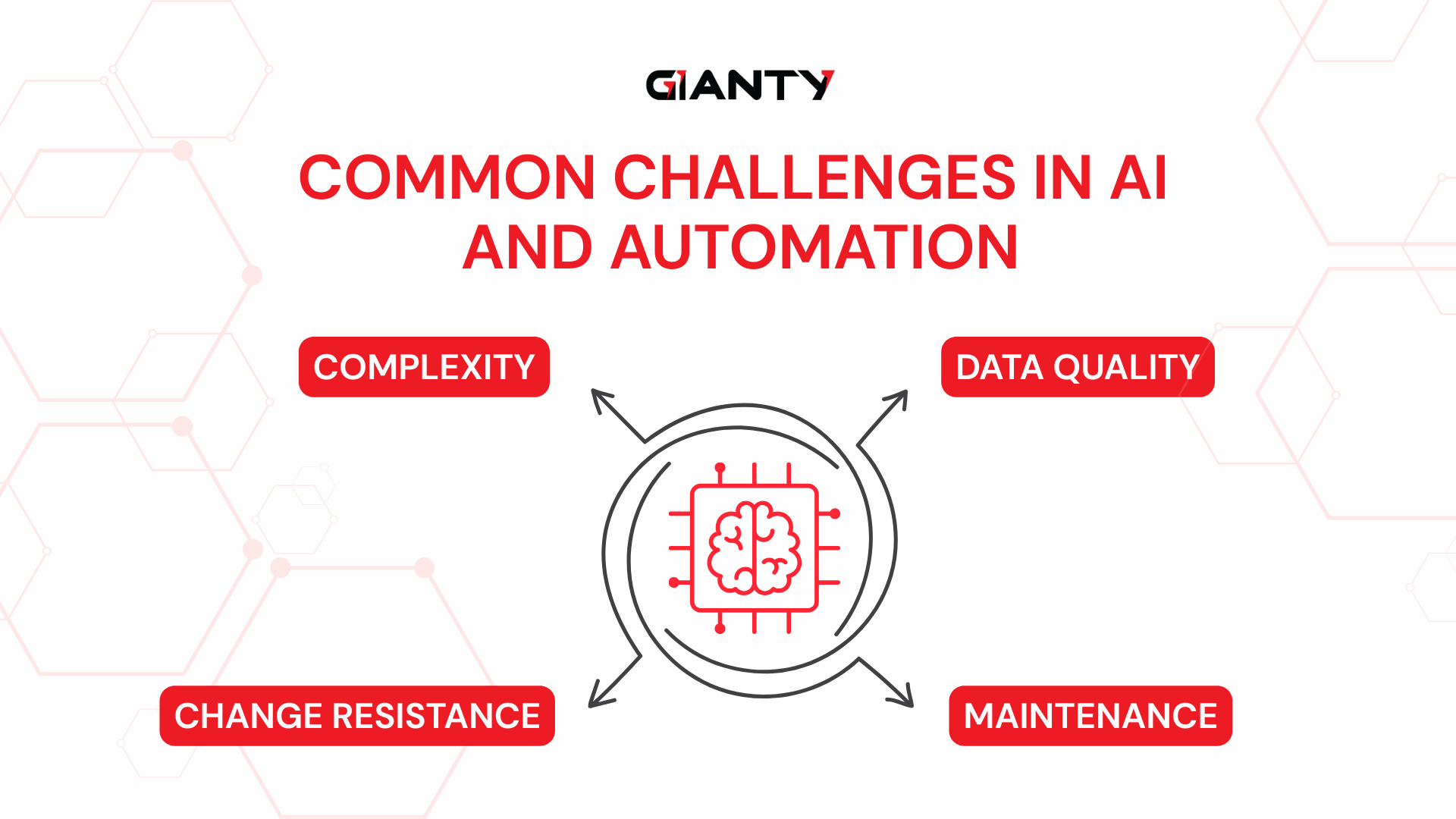
Complexity: AI isn’t just another software tool – it’s an evolving system that requires planning, infrastructure, and expertise. AI involves selecting the right models, training them with data, evaluating performance, and continuously refining output.
Don’t try to build everything in-house if the expertise isn’t there – partner with specialists (like GIANTY) who can help design and deliver AI solutions aligned with your business goals.
Data Quality: No matter how sophisticated your AI model is, it’s only as good as the data it learns from. If your data is outdated, incomplete, inconsistent, or biased, the results will reflect that and can even cause harm to decision-making or customer experience.
Change Resistance: Introducing AI and automation inevitably changes how teams work and not everyone will be thrilled at first. Employees may worry about job security or feel skeptical about new tools they don’t understand.
Maintenance: No such thing as “set it and forget it”, AI and automation require ongoing care. Models need to be retrained as business conditions or data sources change.
Automation scripts might break when software updates or processes evolve. Without regular monitoring, you risk performance degradation or unexpected failures.
Humans, AI, and Automation: Building the Ultimate Team
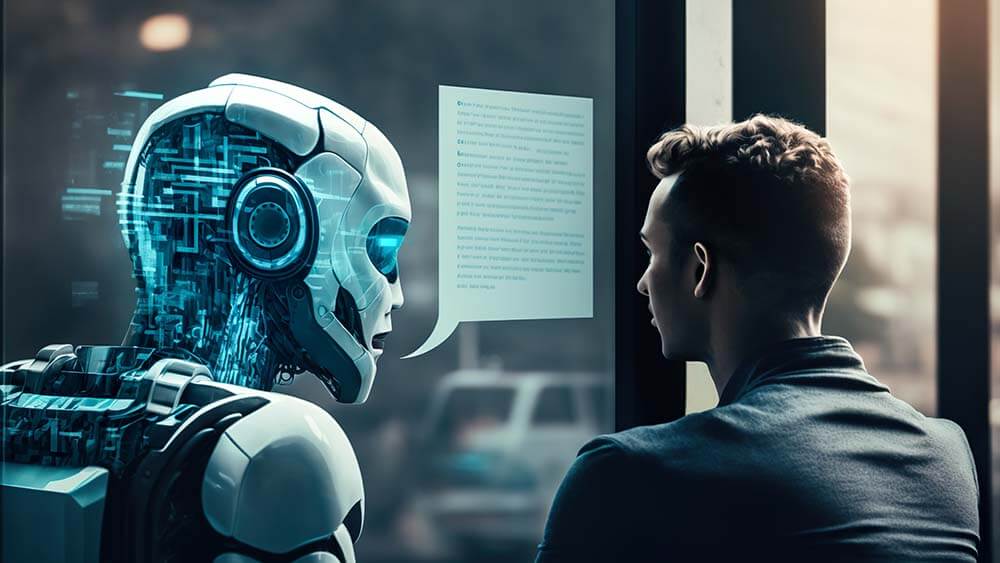
Where are humans in the process? While AI and automation are powerful on their own, they’re not here to replace people they’re here to amplify human potential. The real magic happens when each side brings its strengths to the table.
What Machines Do Best
- AI is exceptional at analyzing massive datasets, spotting trends, and making fast, data-driven predictions. It’s like having a super-intelligent analyst working 24/7.
- Automation is the tireless executor. It handles repetitive, rule-based tasks with speed and flawless consistency—no burnout, no breaks.
What Humans Do Best
Despite all the tech, humans remain irreplaceable – and here’s why:
- Critical thinking: We assess risks, connect abstract ideas, and evaluate context in ways machines can’t.
- Creativity and innovation: AI can generate options, but only humans can dream up the next big idea.
- Emotional intelligence: Machines don’t understand feelings. Humans build relationships, show empathy, and understand nuance.
- Strategic decision-making: People define business goals, weigh long-term trade-offs, and lead through change.
The Real Power is Collaboration
The future of work isn’t humans vs. machines – it’s humans working with machines. Picture a support team where:
- AI analyzes customer sentiment.
- Automation routes tickets and provides immediate answers to common issues.
- Humans handle complex, emotional, or high-stakes conversations that require empathy and judgment.
This model delivers better customer experiences, more productive teams, and smarter operations overall.
Final Thought: Ready to AI-Automate?
AI vs. automation each have distinct roles in the modern enterprise. Used in the right way, they truly are different but complementary tools. Businesses that understand these differences can craft smarter strategies – applying automation where it adds efficiency, AI where it adds insight, and integrating the two for maximum strategic value.
At GIANTY, we specialize in helping businesses move from exploration to execution. Our applied AI engineers don’t just use tools – they develop tailored solutions that align with your unique goals. From identifying high-impact automation opportunities to integrating AI for deeper insights, we bring the technical expertise and business understanding needed to deliver results.
Whether you’re piloting your first AI project or scaling automation across departments, GIANTY is here to support every step of the journey. Let’s build smarter, together!



